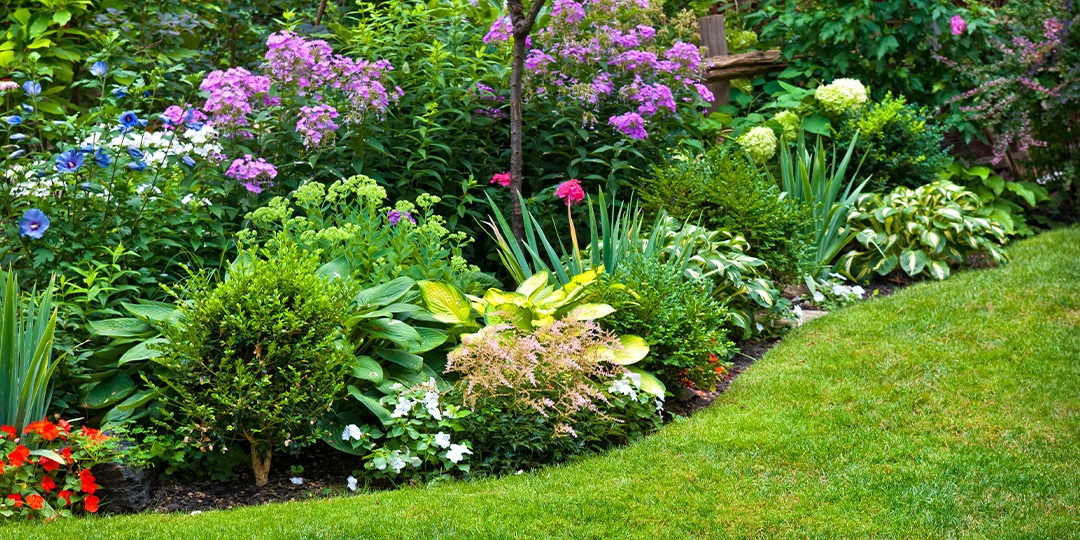You may have heard of the recent movement to replace large swathes of lawn grass with native plants. But why? Does it matter what’s planted in your yard?
The Value Native Plants Provide to Your Yard
There are a few reasons native plants and trees are valuable. For one, the wildlife in your area evolved alongside the plants meant to grow there. They rely on those plants and trees for food and hunting grounds. For another, animals also rely on these trees for homes. According to the Audubon Society, over 500 species of caterpillars can find a home in one kind of native oak tree. Compare that to a ginkgo native to East Asia, which provides a habitat for only five caterpillar species in the US. And that’s just one kind of animal.
Indigenous plants also require less specialized care and fewer soil amendments that could potentially harm the native ecosystem. Native species tend to be healthier since they’re adapted to native soils and soil quality. Trees that didn’t develop to live in your area often require consistent fertilization since the soil likely doesn’t provide the nutrients needed to survive. The more you have to change the soil to make it hospitable, the less inviting it will be for indigenous plants (and the more money you’ll have to spend on upkeep).
What Is a Native Tree?
As you might expect, a native tree is a tree that grows naturally in your area. However, finding native trees is more complicated than simply asking, “What grows in my state?” For example, a desert willow that would flourish towards the southern border of California would die in the state’s northern mountains. The Douglas Fir that prefers the Northern Coast Ranges would wilt if planted in LA. Even in an area as small as a single valley, what trees will thrive where comes down to everything from elevation and daily sunlight to soil type and available water.
This all goes to say that just because a tree is native to your state or even your region doesn’t mean it’s right for your yard. An arborist can use a soil analysis and yard inspection to tell you what trees will thrive where you live. We can also tell you what trees you already have that aren’t native to your area.
Here’s how to take that first step into native planting to make your yard a haven for the local ecosystem.
How to Get Started on Your Native Plant Garden
Just because a tree or plant isn’t native doesn’t mean you have to rip it out. Unless an expert tells you that a species is harmfully invasive, there’s no reason to remove a healthy plant that’s providing joy and beauty to your home. Instead, indigenous trees are perfect for replacing trees that need removal due to disease, age, damage, or other reasons, or for adding a tree or shrub where there wasn’t one before.
What Plants Are Native to My Area?
The first step is research. Use the Audubon Society’s native plant database and the National Wildlife Federation’s native plant finder to start your list. A quick search turns up pages of resources to help you find plants native to your area. Besides searching online, you can also:
- Ask a librarian for books on native plants.
- Request help from a native plant nursery.
- Connect with a local native plant society.
- Contact your local Monster Tree Service office.
Finding the Right Native Plant Nurseries
Local nurseries will almost always have a better grasp on what will grow well in your area than national or even statewide distributors. Opt for seeds or plants sourced locally without depleting natural regions where these plants grow. The Plant Native nursery directory can help you find a seller nearby, where you can find everything from trees and shrubs to native wildflowers.
Get Help Designing Your Native Plant Landscaping
If you aren’t sure where to start, it’s time to turn to the pros at Monster Tree Service. Our arborists can tell you which non-native trees and shrubs are struggling in your yard and recommend native versions to replace them. Call your local Monster Tree Service at (888) 744-0155: or request an estimate online to learn more about the native trees that will thrive with you.

